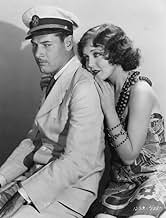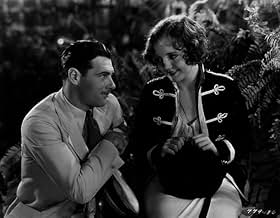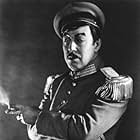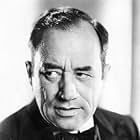Heyst, a hermit on his own tropical island, plays unwilling host to red-headed stowaway Alma. Danger looms...Heyst, a hermit on his own tropical island, plays unwilling host to red-headed stowaway Alma. Danger looms...Heyst, a hermit on his own tropical island, plays unwilling host to red-headed stowaway Alma. Danger looms...
Clarence Wilson
- Zangiacomo
- (as Clarence H. Wilson)
Stanley Fields
- Steamer Captain
- (uncredited)
Lillian Worth
- Myrtle
- (uncredited)
- Director
- Writers
- All cast & crew
- Production, box office & more at IMDbPro
Storyline
Did you know
- TriviaAt Paramount's foreign studio in Joinville, France four alternate language versions were filmed: in French, Italian, Polish and Swedish.
- ConnectionsAlternate-language version of Dans une île perdue (1931)
Featured review
Nancy Carroll is a violinist in an all-girl band on Surabaya, where she is the object of lust for sexually predatory Clarence Wilson and Warner Oland. That's actually taken from Joseph Conrad's VICTORY, although I doubt he had Wilson and Oland in mind when it became his first commercially successful book in 1915. She stows away on Arlen's boat to get away from them, where Nancy gets predatory about him, while he doesn't seem to be interested, possibly because his voice hasn't yet broken.
Director William Wellman puts in a lot of tricks, with a long tracking shot of the goings-on of Oland's tawdry 'casino', and an adventurously noisy first half of the movie, where the sounds of the orchestra, crowds, some woman laughing and other people singing threaten the dialogue. 1930 heard the talkies come of age, with some noisy movies (like the battle sequences of ALL QUIET ON THE WESTERN FRONT) like this one. Clearly sound was no longer a novelty, but part of the design of telling a story; the noise of 'civilization' on Surabaya is in contrast to to the quiet on Arlen's island. Wellman was one of the directors of the era who thought that motion pictures should move, and sound pictures should have sound.
Paramount produced versions of this movie in six languages. While alternate-language versions were a common phenomenon of the time, before dubbing was perfected, to maintain foreign markets, clearly this was seen as an important movie. Its release at less than an hour indicates that something had gone wrong. While it appears a bit too brisk, that's the limit of it so far as I can see, and that briskness is due to its short length. Perhaps preview audiences didn't care for it, so the Paramount brass had it cut down.
Director William Wellman puts in a lot of tricks, with a long tracking shot of the goings-on of Oland's tawdry 'casino', and an adventurously noisy first half of the movie, where the sounds of the orchestra, crowds, some woman laughing and other people singing threaten the dialogue. 1930 heard the talkies come of age, with some noisy movies (like the battle sequences of ALL QUIET ON THE WESTERN FRONT) like this one. Clearly sound was no longer a novelty, but part of the design of telling a story; the noise of 'civilization' on Surabaya is in contrast to to the quiet on Arlen's island. Wellman was one of the directors of the era who thought that motion pictures should move, and sound pictures should have sound.
Paramount produced versions of this movie in six languages. While alternate-language versions were a common phenomenon of the time, before dubbing was perfected, to maintain foreign markets, clearly this was seen as an important movie. Its release at less than an hour indicates that something had gone wrong. While it appears a bit too brisk, that's the limit of it so far as I can see, and that briskness is due to its short length. Perhaps preview audiences didn't care for it, so the Paramount brass had it cut down.
Details
- Release date
- Country of origin
- Languages
- Also known as
- Two Against Death
- Filming locations
- Production company
- See more company credits at IMDbPro
- Runtime58 minutes
- Color
- Aspect ratio
- 1.20 : 1
Contribute to this page
Suggest an edit or add missing content























